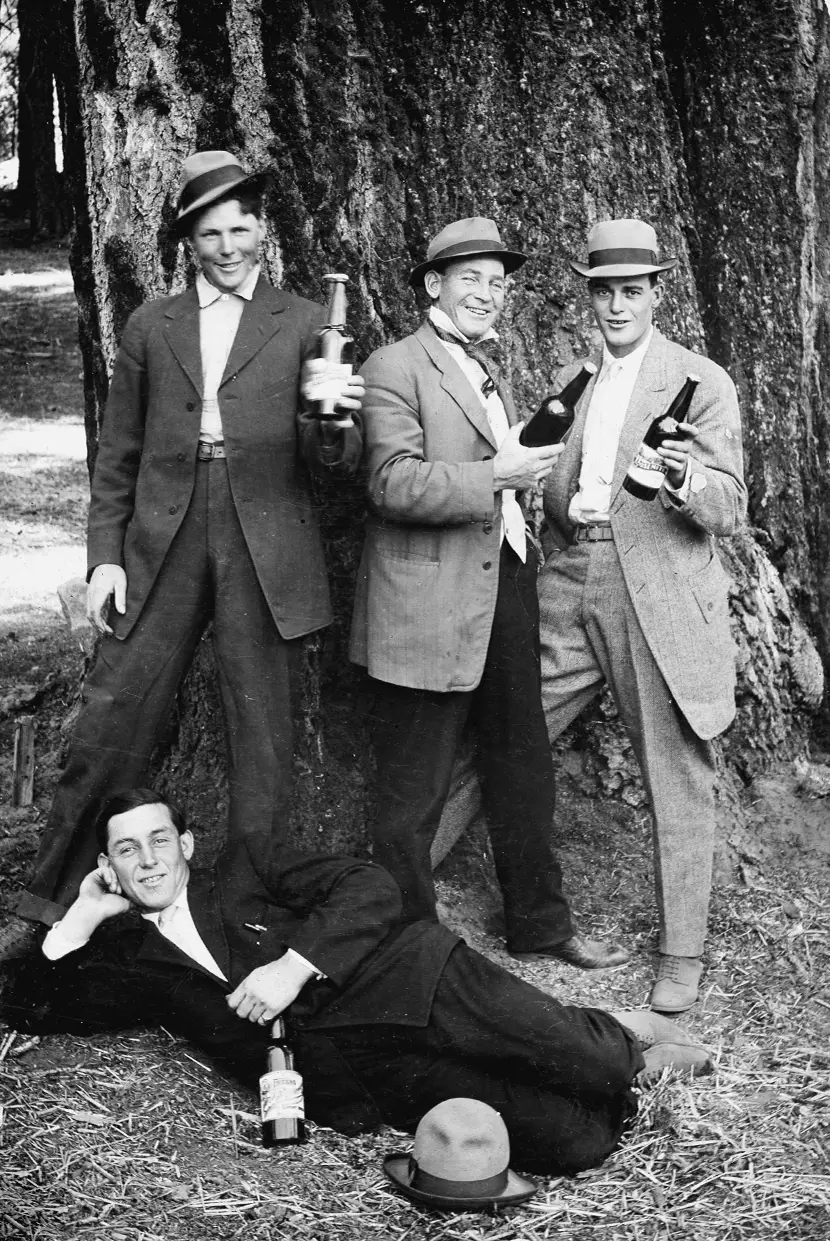On May 16, 1905, the Madera County coroner held an inquest into the demise of one Blucher N. Settle. It was determined that he had met his death from gunshot wounds inflicted by John Enos at Sugar Pine. The incident, which caused quite a stir at the time, occurred at Steven’s Place and revealed a slice of life in that little lumber community of eastern Madera County that wasn’t exactly as pure as the driven snow.
Steven’s Place was about a mile and a quarter from the Sugar Pine Mill itself and was a combination saloon and bordello. On Friday night, May 12, 1905, the establishment was enjoying a brisk business. “Teddy” and “Mabel” were especially busy, dancing and drinking with the customers, and soon the stage was set for a deadly confrontation between Settle and Enos.
Both men were fairly well known in Madera. Settle had lived here for some time, and in the summer months, he was a logger at Sugar Pine. He was about 35 years of age, a Spanish-American War veteran, and a native of Tennessee. Enos, who also lived in Madera, when he wasn’t working at Sugar Pine, was less well known, being a recent arrival to the area from Selma.
The first news of the killing was carried over the Sugar Pine telephone wires and was understandably sketchy. The initial report indicated that Settle was killed by Enos when the latter pumped five bullets into him from a .38 caliber Smith and Wesson revolver. The account said that Settle lived but a few moments and that Enos left the premises immediately for Fresno Flats (present-day Oakhurst) to turn himself in. Upon learning of the shooting, Sheriff Jones and J.W. Linville, a friend of Settle’s, headed for the mountains.
The initial investigation revealed the following scenario. On Friday at about midnight, Settle went into Steven’s Place for some refreshments and entertainment. He headed toward a certain room and found it occupied by Enos. When he demanded admittance, he was refused, whereupon, the would-be intruder threatened to break down the door. Enos, it was reported, called out, “If you break that door in, I will take a pot shot at you.” The warning apparently had no effect, and down came the door.
Enos was as good as his word. He stopped Settle with his pistol. The Sugar Pine doctor was immediately summoned, but it was too late. By morning, Enos was in custody in Madera. When questioned here, however, the story took a little different twist.
Enos claimed to have gone to Steve’s Place with a friend. He found a partner, danced a couple of times, and went to the bar for a drink. About that time, Settle, who was already at the bar, grabbed a glass and threw it at Enos. The prisoner claimed that Settle then began cursing and chasing him. Enos said that he ran to the room of one of the saloon girls. Outside he could hear Settle pounding on the door and swearing to “get him.”
According to Enos, Mabel, one of the girls at Steven’s Place, came upon the scene and took Settle to another room. Soon she was back to check on Enos and asked him if he wouldn’t like something to eat. Enos assented and went to the kitchen with Mabel. Shortly a bell rang, indicating Mabel’s services were needed upstairs, whereupon Enos returned to the room in which he had formerly hidden.
Enos sat down on the bed, no doubt contemplating his predicament, when all of a sudden, the door swung open. Although it was dark in the room, as the door cracked, Enos saw that it was Settle.
Claiming that he feared Settle because of his reputation as a “bad man,” and considering an attempt upon his life to be imminent, Enos admitted to emptying his gun at Settle. The mortally wounded man staggered out of the doorway, and Enos stepped over him. “After getting some money,” he had on deposit, Enos headed for Fresno Flats and subsequent incarceration.
To be sure, not every lumberman in Sugar Pine frequented establishments like Steven’s Place. “There were proper family men who arrived at Sugar Pine…with wife and children.”
“The children attended the Sugar Pine School; wives kept house, and husbands worked diligently and soberly….”
But there was another side to Sugar Pine; one that Elmer Cox, secretary, and general manager of the Madera Sugar Pine Company, did not try to squelch. “So long as the product proceeded as scheduled, he seemed little concerned about the “off-duty peccadilloes” of some of the employees. In any case, the reality is that however distasteful, the goings-on at Steven’s Place remain an authentic piece of Madera County’s past. Not everyone in Sugar Pine was a saint.
Originally published in the Madera Tribune




